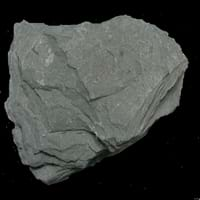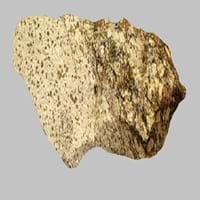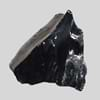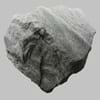Definition
Slate is a fine-grained, foliated, homogeneous metamorphic rock derived from an original shale-type sedimentary rock composed of clay or volcanic ash through low-grade regional metamorphism
Charnockite is a variety of granite containing minerals like orthopyroxene, quartz, and feldspar
Origin
England
Tamil Nadu, India
Discoverer
Unknown
T. H. Holland
Etymology
From Old French esclate, from esclat (French éclat)
From Job Charnock, an administtrator of East India Company
Class
Metamorphic Rocks
Igneous Rocks
Sub-Class
Durable Rock, Medium Hardness Rock
Durable Rock, Hard Rock
Group
Not Applicable
Plutonic
Other Categories
Fine Grained Rock, Opaque Rock
Coarse Grained Rock, Opaque Rock
Texture
Foliated
Granular
Color
Black, Brown, Buff, Green, Light to Dark Grey, Purple, Red, Shades of Blue
Black, Grey, Orange, Pink, White
Durability
Durable
Durable
Scratch Resistant
Yes
Yes
Appearance
Dull
Veined or Pebbled
Interior Uses
Bathrooms, Decorative Aggregates, Entryways, Floor Tiles, Flooring, Homes, Hotels, Interior Decoration, Kitchens, Stair Treads
Bathrooms, Countertops, Decorative Aggregates, Entryways, Floor Tiles, Homes, Hotels, Kitchens, Stair Treads
Exterior Uses
As Building Stone, As Facing Stone, Garden Decoration, Paving Stone
As Building Stone, As Facing Stone, Bridges, Paving Stone, Garden Decoration, Office Buildings, Resorts
Other Architectural Uses
Curbing
Curbing
Construction Industry
As Dimension Stone
As Dimension Stone
Medical Industry
Not Yet Used
Not Yet Used
Antiquity Uses
Artifacts, Monuments, Sculpture, Small Figurines
Artifacts, Monuments, Sculpture, Small Figurines
Commercial Uses
Blackboards, Commemorative Tablets, Laboratory bench tops, Standard material for the bed of Billiard table, Standard material for the beds of Pool and Snooker table, Tombstones, Used in aquariums, Writing Slates
Curling, Gemstone, Laboratory bench tops, Tombstones
Types
Not Available
Enderbite
Features
Easily splits into thin plates, Surfaces are often shiny, Very fine grained rock
Available in Lots of Colors and Patterns, It is One of the Oldest, Strongest and Hardest Rock
Archaeological Significance
Famous Monuments
Data Not Available
Data Not Available
Famous Sculptures
Data Not Available
Data Not Available
Pictographs
Used
Not Used
Petroglyphs
Used
Not Used
Formation
Slate is a low grade metamorphic rock that is generally formed by metamorphosis of mudstone or shale, under relatively low pressure and temperature conditions.
Charnockite is an intrusive igneous rock which is very hard and is formed due to weathering of existing rocks.
Mineral Content
Apatite, Biotite, Chlorite, Feldspar, Graphite, Hematite, Kaolinite, Magnetite, Pyrite, Tourmaline, Zircon
Amphibole, Biotite, Feldspar, Hornblade, Micas, Muscovite or Illite, Olivine, Plagioclase, Pyroxene, Quartz
Compound Content
Aluminium Oxide, CaO, Iron(III) Oxide, Potassium Oxide, MgO, Sodium Oxide, Silicon Dioxide, Titanium Dioxide
Aluminium Oxide, CaO, Iron(III) Oxide, FeO, Potassium Oxide, MgO, MnO, Sodium Oxide, Phosphorus Pentoxide, Silicon Dioxide, Titanium Dioxide
Types of Metamorphism
Burial Metamorphism, Cataclastic Metamorphism, Regional Metamorphism
Burial Metamorphism, Contact Metamorphism, Regional Metamorphism
Types of Weathering
Biological Weathering, Chemical Weathering, Mechanical Weathering
Biological Weathering
Types of Erosion
Coastal Erosion, Glacier Erosion, Water Erosion, Wind Erosion
Chemical Erosion, Water Erosion, Wind Erosion
Grain Size
Very fine-grained
Coarse Grained
Fracture
Splintery
Not Available
Streak
Light to dark brown
White
Porosity
Less Porous
Very Less Porous
Luster
Dull
Not Available
Compressive Strength
Not Available
Cleavage
Slaty
Not Available
Toughness
1.2
Not Available
Specific Gravity
2.65-2.8
Not Available
Transparency
Opaque
Opaque
Density
2.6-2.8 g/cm3
2.6 g/cm3
Specific Heat Capacity
Not Available
Resistance
Heat Resistant, Impact Resistant, Pressure Resistant, Wear Resistant
Heat Resistant, Wear Resistant
Deposits in Eastern Continents
Asia
China, India, Turkey
India
Africa
Not Yet Found
East Africa, Ethiopia, Madagascar, Morocco, Mozambique
Europe
Belgium, France, Germany, Italy, Norway, Portugal, Spain, United Kingdom
Albania, Romania, Scotland, United Kingdom
Others
Arctic
Not Yet Found
Deposits in Western Continents
South America
Brazil
Brazil, Colombia, Venezuela
Deposits in Oceania Continent
Australia
Not Yet Found
Central Australia, Western Australia
Slate vs Charnockite Characteristics
Though some rocks look identical, they have certain characteristics which distinguish them from others. Characteristics of rocks include texture, appearance, color, fracture, streak, hardness etc. Slate vs Charnockite characteristics assist us to distinguish and recognize rocks. Also you can check about Properties of Slate and Properties of Charnockite. Learn more about Slate vs Charnockite in the next section. The interior uses of Slate include Bathrooms, Decorative aggregates, Entryways, Floor tiles, Flooring, Homes, Hotels, Interior decoration, Kitchens and Stair treads whereas the interior uses of Charnockite include Bathrooms, Countertops, Decorative aggregates, Entryways, Floor tiles, Homes, Hotels, Kitchens and Stair treads. Due to some exceptional properties of Slate and Charnockite, they have various applications in construction industry. The uses of Slate in construction industry include As dimension stone and that of Charnockite include As dimension stone.
More about Slate and Charnockite
Here you can know more about Slate and Charnockite. The life cycle of a rock consists of formation of rock, composition of rock and transformation of rock. The composition of Slate and Charnockite consists of mineral content and compound content. The mineral content of Slate includes Apatite, Biotite, Chlorite, Feldspar, Graphite, Hematite, Kaolinite, Magnetite, Pyrite, Tourmaline, Zircon and mineral content of Charnockite includes Amphibole, Biotite, Feldspar, Hornblade, Micas, Muscovite or Illite, Olivine, Plagioclase, Pyroxene, Quartz. You can also check out the list of all Metamorphic Rocks. When we have to compare Slate vs Charnockite, the texture, color and appearance plays an important role in determining the type of rock. Slate is available in black, brown, buff, green, light to dark grey, purple, red, shades of blue colors whereas, Charnockite is available in black, grey, orange, pink, white colors. Appearance of Slate is Dull and that of Charnockite is Veined or Pebbled. Properties of rock is another aspect for Slate vs Charnockite. The hardness of Slate is 3-4 and that of Charnockite is 6-7. The types of Slate are Not Available whereas types of Charnockite are Enderbite. Streak of rock is the color of powder produced when it is dragged across an unweathered surface. The streak of Slate is light to dark brown while that of Charnockite is white. The specific heat capacity of Slate is 0.76 kJ/Kg K and that of Charnockite is Not Available. Depending on the properties like hardness, toughness, specific heat capacity, porosity etc., rocks are resistant to heat, wear, impact, etc.Slate is heat resistant, impact resistant, pressure resistant, wear resistant whereas Charnockite is heat resistant, wear resistant.





